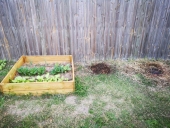for those of you who live in very hot locations, (as I do) you might consider Steam Canning. Like a bath canner you should only can high acid foods and nothing that requires more that 45 minute of processing (all the water boils off).
There are a lot of resources available for canning. Someone posted the USDA site. This site:
https://nchfp.uga.edu/how/can_home.html#gsc.tab=0
has a book, by chapters you can download and print.
there is also the USDA "your choice soup" recipe. But if you are just starting out, maybe skip this until you have some experience, not that you couldn't do it, it's that the "why" you make some of the choices is assumed.
https://www.healthycanning.com/usdas-your-choice-soup-recipe
The Healthy canning site is also a good site. It provides science based, proven recipes.
Science based means the recipes have been tested and it has been proven that the food product reaches the correct internal temperature (based on the process method) to be considered shelf stable. The methods recommended for chopping, weighing and measuring the food go in to the testing process. Which is it is recommended that you process chopped squash, but not pureed. The density of the food prevents the heat from getting to the center of the jar. The heat process at play here is convection, the jar heats from the outside in (thank you, captain obvious, LOL).
With canning, the time the food goes into the canner, the processing time (and if pressure canning the "wait" time), along with the time the jars need to sit (12 - 24 hours) are all factored into the producing of a safe product.
Ball, Kerr and Golden Harvest jars and products are all produced by the Newall company, which is owned by Rubbermaid.
Ball produces the Ball Blue Book every few years and it is recommended that you purchase the new one when it comes out. This isn't just because it is a money-maker (yes, it is), but also because the science is changing. Until about a year ago it was recommended that you simmer your lids. The reason was to soften the rubber gasket material (not just sterilize the lid). The new lids do not have that requirement (everybody say YEAH) because the gasket material has changed.
Also, the older books have recipes and method now proven to be less safe. I just composted a Ball Blue book from 1973 which showed open kettle methods for jams and jelly which recommended inverting the jars instead of processing.
Other resources:
https://extension.oregonstate.edu/topic/food/preservation/resources (they have an app for OLDER smart phones (Iphone and android)
https://hgic.clemson.edu/factsheet/canning-foods-at-home/










